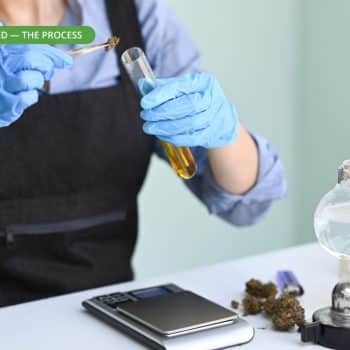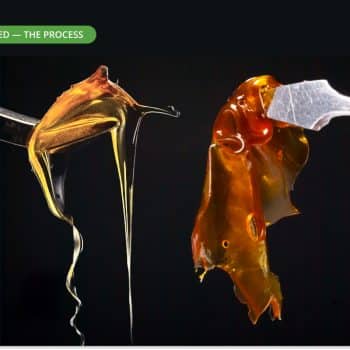HHC-P is an improved version of HHC, a more potent synthetic cannabinoid. It’s the result of THC-P hydrogenation, not occuring naturally in the cannabis plants. Still in the research phase.
HHC-P A Potential Breakthrough in Medical Science
HHC-P, also known as hexahydrocannabinol phosphate, is a novel compound that has gained attention in the field of medical science. It belongs to the class of cannabinoids, which are naturally occurring compounds found in the cannabis plant.
The History of The Emergence of HHC-P
The study of cannabinoids dates back several decades, with researchers initially focusing on the most well-known cannabinoid, delta-9-tetrahydrocannabinol (THC). THC is primarily responsible for the psychoactive effects of cannabis and has been extensively studied for its potential therapeutic properties.
As research into the various compounds found in cannabis deepened, scientists discovered other cannabinoids, such as cannabidiol (CBD), which gained attention for its non-psychoactive nature and potential medical applications. CBD has been investigated for its anti-inflammatory, analgesic, and anxiolytic properties.
In recent years, the exploration of cannabinoids has expanded even further, leading to the discovery and study of novel compounds like HHC-P. HHC-P is derived from the chemical modification of CBD into its phosphate form, resulting in a unique compound with potentially distinct properties and therapeutic potential.
The specific origins of HHC-P research may vary, but it likely began with scientists seeking to explore alternative cannabinoids and their potential applications in medicine. This involves extensive laboratory investigations, including chemical synthesis, in vitro studies, and preclinical evaluations to assess the pharmacological properties and potential therapeutic effects of HHC-P.
Research on HHC-P is still in its early stages, but preliminary findings suggest that it may offer advantages over other cannabinoids, such as reduced psychoactive effects while still retaining potential therapeutic benefits. These unique properties make HHC-P an intriguing compound for further study and exploration.
As research continues, scientists are conducting clinical trials to assess the safety, efficacy, and optimal usage of HHC-P in treating specific medical conditions. Ongoing studies aim to provide a clearer understanding of the potential therapeutic applications of HHC-P and its potential role in improving patient outcomes in various healthcare settings.
Overall, the emergence of HHC-P in scientific research and medical science represents a continuous effort to uncover and harness the potential of cannabinoids for therapeutic purposes. With further investigation, HHC-P may contribute to advancements in medical treatments and offer new possibilities for patient care.
Explaining HHC-P
HHC-P is derived from the conversion of cannabidiol (CBD) to its phosphate form. Through chemical modification, CBD is transformed into HHC-P, resulting in a unique compound with potentially distinct properties and therapeutic applications.
Descriptive properties of HHC-P and its structure
HHC-P possesses a specific molecular structure that distinguishes it from other cannabinoids. It consists of a hexahydrocannabinol core, which is a saturated form of the commonly known tetrahydrocannabinol (THC). The addition of the phosphate group further enhances its pharmacological properties.
Differences between HHC-P and other cannabinoids
HHC-P exhibits notable differences compared to other cannabinoids such as THC and CBD. While THC is known for its psychoactive effects, HHC-P is reported to have a reduced psychotropic potential, making it a potentially attractive option for medical applications. Additionally, HHC-P may exhibit unique interactions with the endocannabinoid system, leading to distinct therapeutic effects.
Research on the pharmacological properties of HHC-P
Scientists have been actively investigating the pharmacological properties of HHC-P. Preliminary studies suggest that it may interact with cannabinoid receptors in the body, modulating various physiological processes. The specific mechanisms of action and receptor interactions of HHC-P are still being elucidated through ongoing research.
By understanding the definition, properties, and structure of HHC-P, researchers can gain insights into its potential applications in the field of medicine. Further exploration of its pharmacological properties is essential for uncovering its therapeutic potential and establishing its efficacy in various medical conditions.
Pharmacological Properties of HHC-P
To fully comprehend the potential of HHC-P as a therapeutic agent, researchers have conducted pharmacokinetic studies to investigate its absorption, distribution, metabolism, and elimination in the body. These studies aim to determine the optimal dosage, frequency, and route of administration for HHC-P-based treatments.
One of the primary areas of interest regarding HHC-P is its effect on the central nervous system (CNS). Studies have examined the interaction between HHC-P and cannabinoid receptors in the brain and spinal cord, shedding light on its potential neurological effects.
This research helps elucidate the mechanisms by which HHC-P modulates neuronal activity and neurotransmitter release, which can have implications for the treatment of neurological disorders.
Therapeutic potential of HHC-P in specific conditions
Preclinical studies and early clinical trials have examined its potential efficacy in:
- Analgesia;
- Inflammation;
- Neurodegenerative diseases;
- Epilepsy;
- Psychiatric disorders.
The purpose of these studies is to determine the specific therapeutic effects of HHC-P and to compare them to existing therapies.
Comparison of HHC-P with existing treatments
Comparative studies between HHC-P and other therapeutic agents provide valuable insights into the potential advantages and limitations of HHC-P as a medical intervention. By evaluating its efficacy, safety, and tolerability profile, researchers can determine whether HHC-P offers superior benefits or serves as a complementary treatment option for specific conditions.
Future Directions and Research Opportunities
The exploration of HHC-P is still in its early stages, and further research is necessary to uncover its full therapeutic potential. Ongoing studies are investigating additional pharmacological properties, exploring potential synergistic effects with other cannabinoids or drugs, and evaluating its long-term safety and efficacy in larger patient populations. These research efforts will contribute to a better understanding of HHC-P and its potential role in medical science.
Understanding the pharmacological properties of HHC-P is crucial for determining its efficacy, safety, and optimal clinical applications. Continued research in this field will facilitate the development of HHC-P-based therapies and potentially revolutionize the treatment landscape for various medical conditions.
Therapeutic Applications of HHC-P
HHC-P holds promise for a wide range of therapeutic applications. Research has focused on exploring its potential efficacy in various medical conditions, including but not limited to.
- Reduction in pain intensity and improvement in pain-related symptoms;
- Relaxation of the inflammatory response and alleviation of associated symptoms;
- Preservation of neuronal function and potential slowing of disease progression in neurodegenerative diseases;
- Reduction in the frequency and severity of seizures in persons with epilepsy;
- Relief of symptoms associated with psychiatric disorders such as anxiety and depression.
Comparative studies are critical to assess the potential benefits and limitations of HHC-P compared to existing treatments.
By evaluating the efficacy, safety and tolerability of HHC-P compared to existing treatments, researchers can identify the unique benefits or additional features that HHC-P can offer. This analysis helps determine HHC-P’s place in the existing therapeutic landscape.
Studying the therapeutic potential of HHC-P in a variety of diseases is an active area of research. Further research and clinical trials are needed to determine its efficacy, optimal dosage, and possible side effects. HHC-P has the potential to revolutionize treatment approaches and improve patient outcomes in a variety of medical settings.
Current Research and Future Perspectives
Continued scientific research on HHC-P is actively expanding our knowledge and exploring its potential applications.
Researchers are conducting studies to unravel the precise mechanisms through which HHC-P exerts its therapeutic effects. These investigations aim to elucidate the molecular pathways, receptor interactions, and cellular responses involved in HHC-P’s pharmacological activities.
Animal and cellular models are being utilized to further understand the therapeutic potential of HHC-P. Preclinical studies provide valuable insights into the efficacy and safety of HHC-P in specific conditions and help establish the foundation for future clinical trials.
Human clinical trials are underway to evaluate the safety, efficacy, and tolerability of HHC-P in various medical contexts. These trials involve controlled testing in patient populations and aim to determine the optimal dosage, administration routes, and potential side effects of HHC-P-based treatments.
The Final Word
While the potential of HHC-P as a breakthrough in medical science is promising, it is important to emphasize the need for continued research, including larger-scale clinical trials and long-term safety studies, to establish its efficacy, safety profile, and optimal usage. Regulatory considerations and adherence to legal guidelines are also crucial in the responsible exploration and potential integration of HHC-P into medical practices.
Overall, HHC-P holds significant potential as a valuable addition to the medical armamentarium. As research progresses and our understanding deepens, HHC-P has the potential to revolutionize medical science and contribute to improved patient outcomes in various medical conditions.









